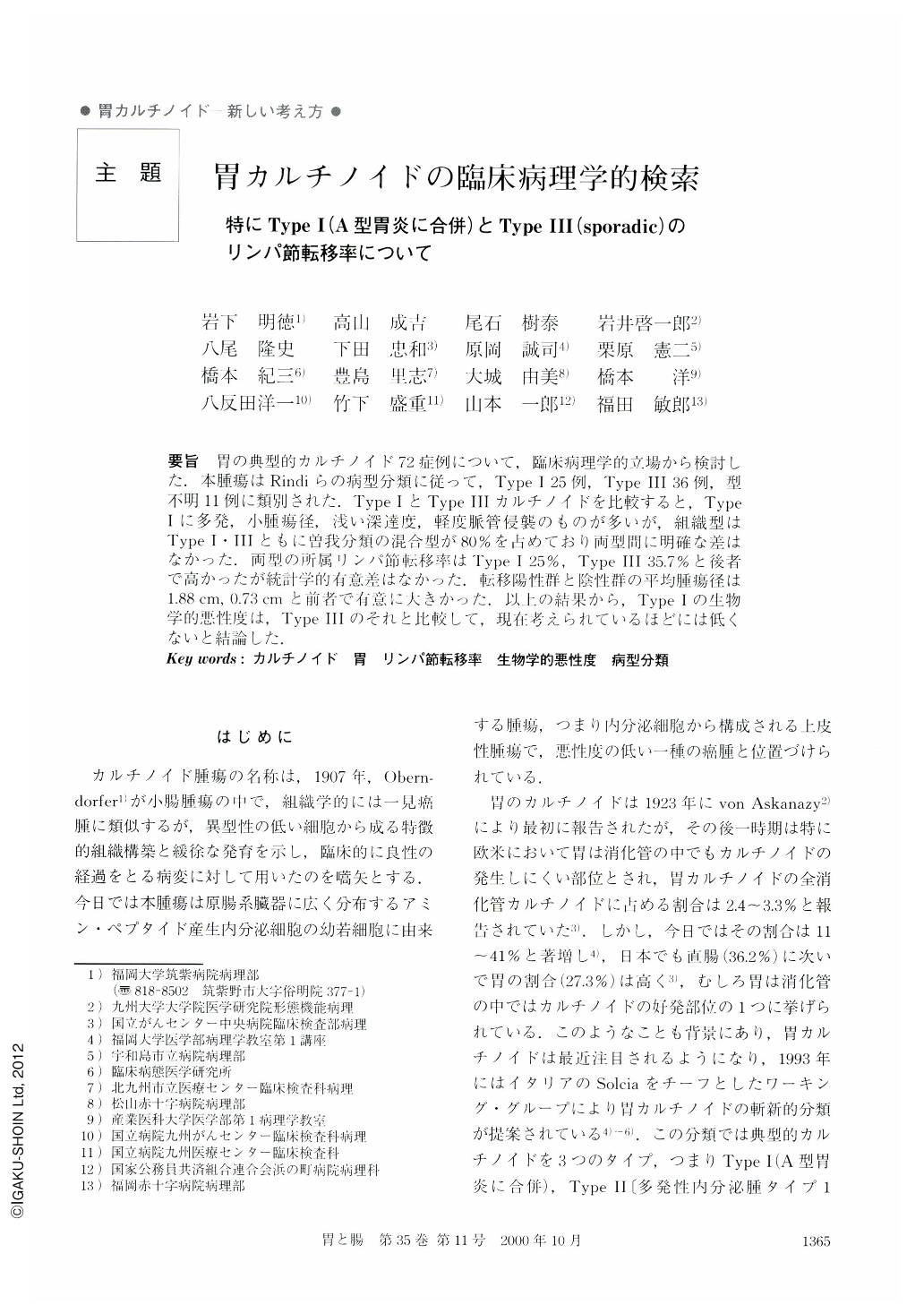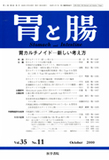Japanese
English
- 有料閲覧
- Abstract 文献概要
- 1ページ目 Look Inside
- サイト内被引用 Cited by
要旨 胃の典型的カルチノイド72症例について,臨床病理学的立場から検討した.本腫瘍はRindiらの病型分類に従って,TypeⅠ25例,TypeⅢ36例,型不明11例に類別された.TypeⅠとTypeⅢカルチノイドを比較すると,TypeⅠに多発,小腫瘍径,浅い深達度,軽度脈管侵襲のものが多いが,組織型はTypeⅠ・Ⅲともに曽我分類の混合型が80%を占めており両型問に明確な差はなかった.両型の所属リンパ節転移率はTypeⅠ25%,TypeⅢ35.7%と後者で高かったが統計学的有意差はなかった.転移陽性群と陰性群の平均腫瘍径は1.88cm,0.73cmと前者で有意に大きかった.以上の結果から,TypeⅠの生物学的悪性度は,TypeⅢのそれと比較して,現在考えられているほどには低くないと結論した.
A clinicopathological study was carried out on 72 cases with typical gastric carcinoid tumors. According to the classification by Rindi et al, those cases were classified as Type Ⅰ(25 cases), Type Ⅲ(36 cases), and unclassified type (11 cases). Comparing of Type Ⅰ and Type Ⅲ, we found that Type Ⅰ had a predilection for multiplicity, small tumor size, shallow depth of invasion and low degree of vascular permeation, but, there was no distinct difference of histological type, i.e., 80% of cases of both Type Ⅰ and Type Ⅲ showed mixed type of Soga's classification. The rate of local lymph node metastasis of Type Ⅰ and Type Ⅲ were 25% and 35.7%, respectively, however, there was no statistically significant difference. The average tumor size of cases with positive lymph node metastasis and those with negative lymph node metastasis were 1.88 cm and 0.73 cm, respectively, with the former lesions being significantly larger. From these results, it was concluded that the biological malignant potentiality of Type Ⅰ, in comparison with Type Ⅲ, was not as low as is presently presumed.

Copyright © 2000, Igaku-Shoin Ltd. All rights reserved.


